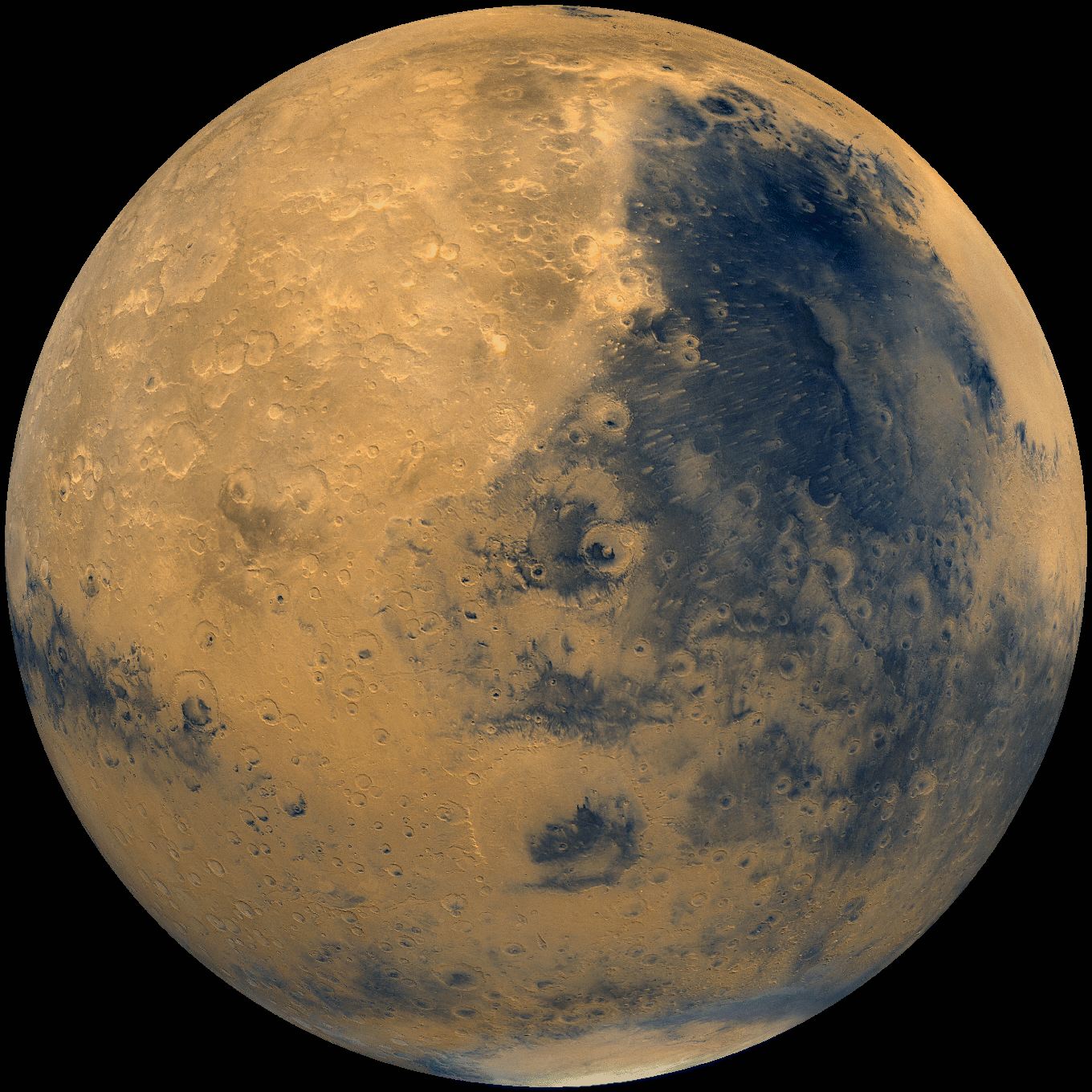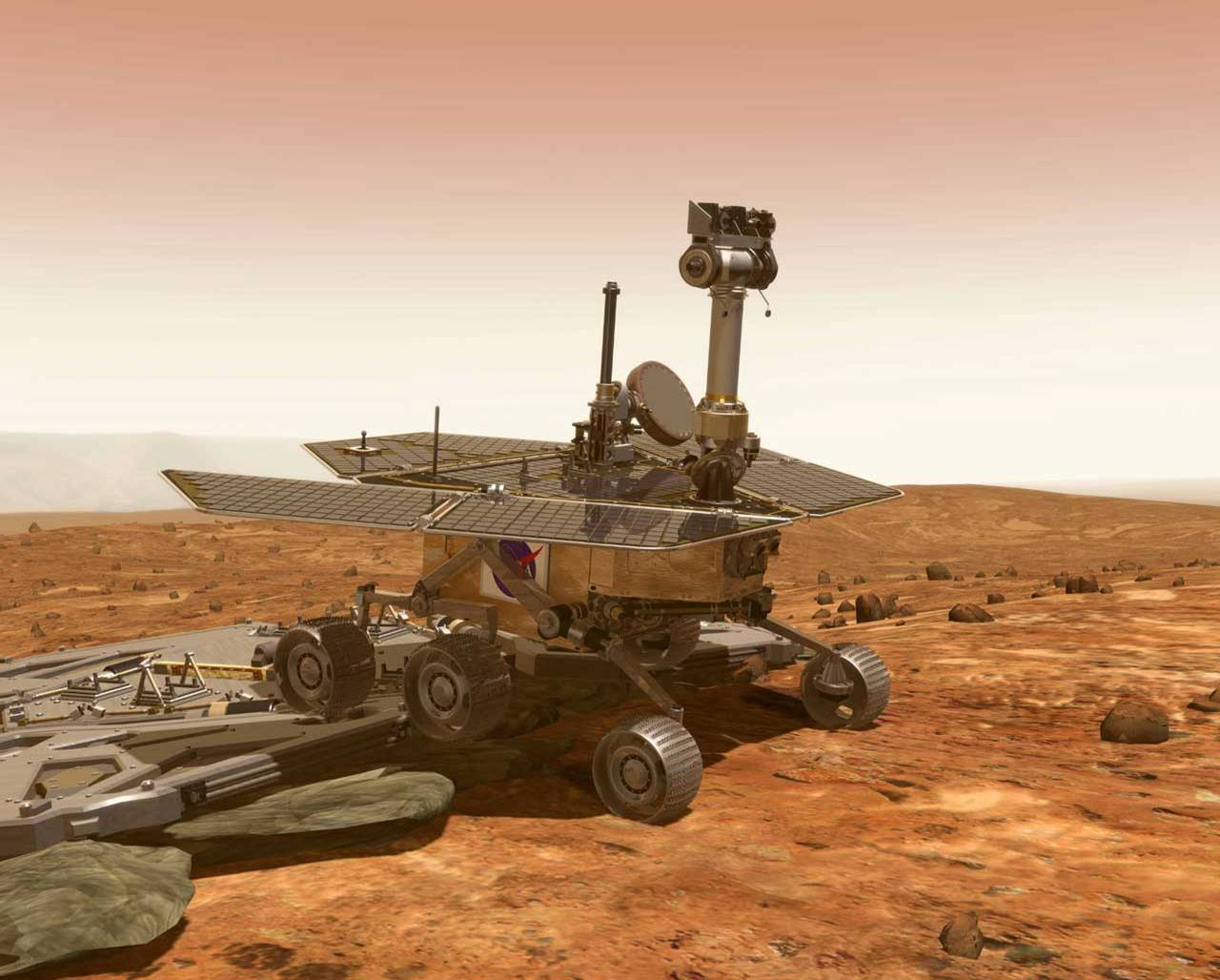Why Is It So Hard to Travel to Mars?

The Challenger and Columbia space shuttle disasters were perhaps two of the most prominent reminders of how crucial it is that everything work just right for a spacecraft to travel to space and successfully return back to Earth.
Whether it was the failure of the seal used to stop hot gases from seeping through, or a piece of foam insulation that damaged the thermal protection system, scientists and engineers must make thousands of predictions of all the things that could go wrong during flight.
NASA's human Mars mission presents even more challenges of sending humans safely to a farther distance and to a more dangerous environment. Designing an aircraft that can safely enter and exit Mars' unpredictable atmosphere is a big challenge. [Gallery: Future Visions of Human Spaceflight]
"Each time we fly to Mars, we learn a little more and get a little smarter," said Walter Engelund of NASA's Langley Research Center. "One thing we have learned is that the Mars atmosphere is certainly a big variable. It is much more dynamic than our own Earth's atmosphere."
For missions that require entry and re-entry into an atmosphere, the design of the spacecraft is typically guided by its EDL (entry, descent and landing) system.
Engelund, along with several other NASA colleagues, published a review of the EDL systems currently being proposed for a future manned mission to Mars in a recent book titled "The Human Mission to Mars. Colonizing the Red Planet." The book is a compilation of studies written by a team of more than 70 scientists, including four astronauts (two who walked on the moon), offering a detailed guide of how to successfully accomplish a human mission to Mars. Engelund is the lead author of the EDL study.
Managing the Weight
Get the Space.com Newsletter
Breaking space news, the latest updates on rocket launches, skywatching events and more!
So far, NASA has had six successful Mars landers: Viking I and II, Pathfinder, MER Spirit and Opportunity, and Phoenix. However, all these missions were robotic missions with vehicles that were significantly lighter than a spacecraft carrying astronauts, supplies and fuel for a round-trip.
Developing systems for a manned mission to Mars will require a careful balancing act between minimizing the weight and figuring out how to use the least amount of fuel possible.
On Jan. 14, 2004, President George W. Bush gave a speech at NASA headquarters outlining a "new course" for the space program that would "extend a human presence across (the) solar system."
With a reminder that it had been nearly a quarter of a century since America developed a new vehicle for space exploration, Bush issued a call for a new manned space vehicle. [The Best (and Worst) Mars Landings]
"We will build new ships to carry man forward into the universe, to gain a new foothold on the Moon, and to prepare for new journeys to worlds beyond our own," Bush said.
As a response to President Bush's vision for space exploration, NASA, in May of 2005, began the Exploration Systems Architecture Study (ESAS), which served as the blueprint for future spacecraft that would eventually send humans back to the Moon and on to Mars. NASA may or may not use the design specifications outlined in this study, but whatever architecture it eventually does use, it will be very different from the robotic mission architecture that is used today.
"When we want to send humans to the surface we are going to need an EDL system capable of delivering at least 10 times (the) mass and volume (of the current robotic missions to Mars)," Engelund said. "NASA has actually been giving some serious thought to this over the last several years."

At least 34 million miles separates Mars and Earth (the distance between the two planets varies during their elliptical orbits around the sun).
One of the greatest design barriers engineers are facing is dealing with the amount of fuel that will be needed to send a spacecraft on such a round trip distance. More fuel means more weight, and more weight means the need for more fuel to transport that weight.
Mars orbit with less fuel
For safety and operational reasons, the spacecraft that will travel to Mars will likely not land on the surface immediately upon reaching the Red Planet.
"For a human-scale mission, it is very likely that we will have a spacecraft that stays in orbit with food and supplies for the journey home, and also for a 'safe haven' in case something goes wrong on the surface," Engelund said.
What scientists are envisioning is to have the entire spacecraft first enter Mars orbit and then deploy a lander down to the surface. The ability to first orbit the planet before landing on it will also give the astronauts an opportunity to observe the atmosphere to ensure that there are no dust storms or hazardous weather at the location where they plan on landing.
To enter Mars orbit, scientists are planning on using a method called aerocapture, which has never been tried before.
"One of the problems of getting a spacecraft to another planet is that we first have to get it out of Earth's orbit," explained Engelund. "So we have to speed it up to a high enough velocity to break [free of] the Earth's gravity field. Then, when the spacecraft gets to its destination planet, it has to slow down enough so that it is 'captured' into orbit around that planet's gravity field."
A process called aerobraking has been used successfully in previous missions.
Aerobraking uses propulsion to first insert the spacecraft into orbit (orbit capture) and then circularizes (or achieves the desired orbit, otherwise known as orbit trim) by having the spacecraft pass through the upper part of the atmosphere several times. Aerocapture, on the other hand, performs both the orbit capture and orbit trim in a single pass through the deeper atmosphere.
Typically, the slowing down of a spacecraft is done by firing retro-rockets, or rockets that fire in the opposite direction than the spacecraft is traveling.
According to Engelund, this method requires a lot of fuel that has to be carried all the way until the spacecraft reaches Mars. It adds additional weight to an already heavier vehicle and is very expensive.
The aerocapture maneuver instead uses the drag caused by the planet's upper atmosphere to slow down the vehicle. The atmosphere, in this case, serves as a "brake" for the vehicle, eliminating the need for additional fuel.
Despite the advantages of using the aerocapture method, scientists also have been studying some of the drawbacks and how to deal with some of the potential problems that could arise.
According to the authors of this report, historical studies have shown that aerocapture is a fairly low-risk technology. However, many of those studies were based on small payloads most appropriate for robotic missions. [Giant Leaps: Top Milestones of Human Spaceflight]
During the aerocapture maneuver, the spacecraft must take a deep dive through the Mars atmosphere. The friction experienced during entry causes the energy of the vehicle's speed to be transferred into heat.
This heating will require an extra aeroshell and a thermal protection system to protect the spacecraft and everything inside. Engelund said that even with these extra components, using aerocapture will still require less weight overall than entering the Mars orbit with a fuel-driven propulsive method.
The other potential problem is with the computer software that guides the spacecraft during the aerocapture pass. The program that is used is smart enough to determine the important parameters: how deep into the atmosphere the spacecraft needs to go, how to monitor the progress in real time, and to predict when to come back out of the atmosphere to reach the correct orbit.
Precision, however, is key.
"Too deep and you burn up," explained Engelund. "Too shallow and you don't remove enough velocity energy, and when you come back out, either you don't get into the proper orbit or worse you don't get into orbit at all and sail right on by the planet."
Deeper knowledge of the Mars atmosphere will help scientists fine-tune this procedure.
"But these are all things we've been studying for years — in some cases decades even — and (we) feel confident we could design an aerocapture system using current technology," Engelund said.
Budget constraints for Mars flights
In April of last year, President Barack Obama, speaking at a conference at NASA's Kennedy Space Center, reiterated America's commitment to sending a human to Mars.
"By 2025, we expect new spacecraft designed for long journeys to allow us to begin the first-ever crewed missions beyond the moon into deep space," Obama said. "We'll start by sending astronauts to an asteroid for the first time in history. By the mid-2030s, I believe we can send humans to orbit Mars and return them safely to Earth. And a landing on Mars will follow. And I expect to be around to see it."
Since then, however, NASA has been undergoing budget cuts that will have an impact on various programs, including those that deal with designing spacecraft for long-distance flights.
"I do think NASA has decided to take a step back and look at a broad range of technology investments to enable future space exploration beyond our own Earth orbit," said Engelund.
Some of those cuts will most likely make its way to the Mars program and determine if and when humans will be able to explore the Red Planet.
"Unfortunately, development is closely tied to budget," said Ayanna Howard, an associate professor of electrical and computer engineering and the chair of the robotics doctoral program at the Georgia Institute of Technology. "If sufficient funding is made available, then scientists (and) engineers should be able to develop and integrate the required EDL components necessary for human Mars missions within the next 30 years. If not enough resources are allocated, this timeline might not be feasible."
With a manned mission to Mars still requiring a great deal of research and investment, scientists and governments may have to consider alternate options if they want to see a human — from any country — land on Mars.
"I think there's a real feeling that NASA can't afford to go it alone, and will look towards international partnerships and cooperation," Engelund said. "Personally I think there is tremendous potential to send humans to Mars — and what better way to do it than with a global campaign allowing many nations to work together?"
This story was provided by Astrobiology Magazine, a web-based publication sponsored by the NASA astrobiology program.
Join our Space Forums to keep talking space on the latest missions, night sky and more! And if you have a news tip, correction or comment, let us know at: community@space.com.
Anuradha was a contributing writer to Space.com in the areas of Earth science, environmentalism, ecology, and space science. She was the former Director (International/Digital Media) at the Sri Lanka President’s Office and the Sri Lankan Government Spokesperson for the Commonwealth Heads of Government Meeting (CHOGM). Before that, she was the director of the Sri Lanka College of Journalism (SLCJ) before returning to Sri Lanka. Currently a Doctoral student and lecturer at the Newhouse School of Public Communications in Syracuse, New York.










